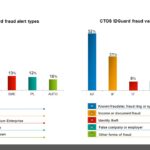A SAS media briefing in KL discussed industry trends in risk, compliance and fraud, highlighting the uncertainty brought about by current US tariffs as well as the rising severity of bank frauds.
SAS managing director for Malaysia, Indonesia, and Vietnam, Febrianto Siboro shared about a bank customer that experienced tenfold improvement in system scalability, transaction per second, and 24/7 system availability after implementing the SAS Asset and Liability Management (ALM) solution.

Febrianto also talked about SAS Viya, which in essence is the technological backbone that underpins SAS’s risk, fraud, and compliance solutions to deliver high-speed, accurate, and adaptive protection. This ultimately enables threat response, regulatory compliance, and operational efficiency for an organisation.
Another way to look at SAS Viya is its function as an enabling platform for solutions like SAS ALM; it allows use of the former’s powerful analytics (and AI and machine learning), for scenario-based risk modelling, interest rate risk measures, and balance sheet analytics.
It enables organisations to process and analyse vast amounts of data in real time, supporting rapid detection and prevention of fraud, financial crimes, and compliance breaches. With Viya, all transactions can be scored instantly using in-memory processing, delivering high-throughput and low-latency responses critical for environments like banking and payments.
Alternative data for financial inclusion
Naeem Sidiqqi, SAS senior advisor for Risk and Quantitative Solutions, also shared about strategies for financial inclusion with a focus on lending to the unbanked and underbanked segment.

Alternative data sources like utility payments and mobile top-up history can be powerful tools for assessing creditworthiness in Malaysia, according to Naeem. By analysing patterns such as consistent electricity bill payments, telecom bill history, and mobile top-up trends, financial institutions can create credit profiles for individuals without traditional banking records.
For example, someone who consistently pays their utility bills on time and shows an increasing mobile top-up history (from RM40 to RM50-RM70 monthly) demonstrates financial responsibility. Banks can use this data to:
1. Create initial credit scores for the unbanked
2. Offer small, secured credit cards or microloans
3. Gradually increase credit limits based on consistent payment behavior
4. Help individuals build a formal credit history
This approach can help extend financial services to the Malaysians currently unbanked, promoting greater financial inclusion.
Converging AML and fraud detection processes
SAS’ AML lead in APAC, Ahmed Drissi, also observed that regulators are pushing for more integrated approaches to financial risk management. For example in the US, regulators like FinCEN require anti-fraud departments to submit suspicious activity reports.

Besides AML and fraud detection using similar technologies like AI and machine learning, operational processes are also converging due to both sharing similar data, for example customers, transactions, and accounts.
This can allow for more holistic monitoring of financial activities, as well as faster detection of potential financial crimes across different domains.
In this way, there is a significant shift in how financial institutions approach risk management and compliance.








